-
Report Prologue
-
Market Introduction
-
Introduction
-
Assumptions & Limitations
-
Research Methodology
-
Research Process
-
Primary Research
-
Secondary Research
-
Market Size Estimation
-
Market Dynamics
-
Introduction
- Increasing Demand From The Automotive Industry
- Strong Performance
-
Drivers
-
In ASEAN & South Africa
-
Of Industrial Sector And Wide Application Scope Of Lubricants
-
Increasing Awareness Linked With Strict Governmental Regulations Surging The Sales
-
Ofsynthetic Lubricants
-
Restraints
- Significant FDI In The
- Sanguine Demand For Agricultural
- High Cost Of Bio-Based Lubricants
-
Rising Environmental Concerns Regarding Usage, Disposal, And Recycling Of Lubricants
-
Increasing Prevalence Of Electric Vehicles Resulting In Declining Demand
-
Trends & Opportunities
-
ASEAN Industrial Sector
-
Equipment In African Region To Offer Lucrative Opportunities
-
Challenge
-
Market Factor Analysis
-
Supply Chain Analysis
- Lubriacants Producers
- End Use Industries
- Bargaining Power
- Bargaining Power Of Buyers
- Threat Of Substitutes
-
Raw Material Suppliers
-
Distributors
-
Porter’s Five Forces Model
-
Of Suppliers
-
Threat Of New Entrants
-
Intensity Of Rivalry
-
ASEAN, Africa, India, & G.C.C.
-
Lubricants Market, By Base Oil
-
Overview
-
Mineral Oil
-
Region/Country, 2020-2027
-
Market Estimates & Forecast, 2020-2027
-
Estimates & Forecast By Region/Country, 2020-2027
-
Bio Based Oil
-
Region/Country, 2020-2027
-
Market Estimates & Forecast,
-
Market Estimates & Forecast By
-
Synthetic Oil
-
Market
-
Market Estimates & Forecast,
-
Market Estimates & Forecast By
-
ASEAN, Africa, India, &
-
G.C.C. Lubricants Market, By Application
-
Overview
-
Automotive
-
Market Estimates & Forecast By Region/Country, 2020-2027
-
Engine Oil
-
Region/Country, 2020-2027
-
Market Estimates & Forecast, 2020-2027
-
Market Estimates & Forecast By Region/Country, 2020-2027
-
Transmission Fluids
-
Forecast, 2020-2027
-
Forecast By Region/Country, 2020-2027
-
Market Estimates & Forecast, 2020-2027
-
Market Estimates & Forecast By Region/Country, 2020-2027
-
Coolants
-
Market Estimates & Forecast By Region/Country, 2020-2027
-
Greases
-
Market Estimates & Forecast By Region/Country, 2020-2027
-
Industrial
-
Market Estimates & Forecast By Region/Country, 2020-2027
-
Process Oil
-
Region/Country, 2020-2027
-
Oil
-
Market Estimates & Forecast By Region/Country, 2020-2027
-
Metal Working Fluids
-
Forecast, 2020-2027
-
Forecast By Region/Country, 2020-2027
-
Engine Oil
-
Region/Country, 2020-2027
-
Market Estimates & Forecast, 2020-2027
-
Market Estimates & Forecast By Region/Country, 2020-2027
-
Greases
-
Market Estimates & Forecast By Region/Country, 2020-2027
-
Hydraulic Oil
-
Region/Country, 2020-2027
-
Market Estimates & Forecast, 2020-2027
-
Market Estimates & Forecast By Region/Country, 2020-2027
-
Others
-
Market Estimates & Forecast By Region/Country, 2020-2027
-
Marine
-
Market Estimates & Forecast By Region/Country, 2020-2027
-
Engine Oil
-
Region/Country, 2020-2027
-
Market Estimates & Forecast, 2020-2027
-
Market Estimates & Forecast By Region/Country, 2020-2027
-
Gear Oil
-
Market Estimates & Forecast By Region/Country, 2020-2027
-
Turbine Oil
-
Region/Country, 2020-2027
-
Market Estimates & Forecast, 2020-2027
-
Market Estimates & Forecast By Region/Country, 2020-2027
-
Others
-
Market Estimates & Forecast By Region/Country, 2020-2027
-
Market Estimates & Forecast, 2020-2027
-
Market Estimates & Forecast,
-
Market Estimates & Forecast By
-
Gear Oil
-
Market Estimates &
-
Market Estimates &
-
Break Oil
-
Market Estimates & Forecast, 2020-2027
-
Market Estimates & Forecast, 2020-2027
-
Market Estimates & Forecast, 2020-2027
-
Market Estimates & Forecast,
-
Market Estimates & Forecast By
-
General Industrial
-
Market Estimates & Forecast, 2020-2027
-
Market Estimates &
-
Market Estimates &
-
Industrial
-
Market Estimates & Forecast,
-
Market Estimates & Forecast By
-
Compressor Oil
-
Market Estimates & Forecast, 2020-2027
-
Market Estimates & Forecast,
-
Market Estimates & Forecast By
-
Turbine Oil
-
Market Estimates & Forecast, 2020-2027
-
Market Estimates & Forecast, 2020-2027
-
Market Estimates & Forecast,
-
Market Estimates & Forecast By
-
Hydraulic Oil
-
Market Estimates & Forecast, 2020-2027
-
Market Estimates & Forecast,
-
Market Estimates & Forecast By
-
Greases
-
Market Estimates & Forecast, 2020-2027
-
ASEAN, Africa, India, & G.C.C. Lubricants Market, By End Use
-
Overview
-
Market Estimates & Forecast, 2020-2027
-
Estimates & Forecast By Region/Country, 2020-2027
-
Textile
-
Market Estimates & Forecast By Region/Country, 2020-2027
-
Textile Composites
-
Region/Country, 2020-2027
-
Market Estimates & Forecast, 2020-2027
-
Market Estimates & Forecast By Region/Country, 2020-2027
-
Textile Weaving
-
Region/Country, 2020-2027
-
Market Estimates & Forecast, 2020-2027
-
Market Estimates & Forecast By Region/Country, 2020-2027
-
Energy
-
Market Estimates & Forecast By Region/Country, 2020-2027
-
LNG (Liquid Natural Gas)
-
Forecast, 2020-2027
-
Forecast By Region/Country, 2020-2027
-
Market Estimates & Forecast, 2020-2027
-
Market Estimates & Forecast By Region/Country, 2020-2027
-
Ocean Energy
-
Region/Country, 2020-2027
-
Market Estimates & Forecast, 2020-2027
-
Market Estimates & Forecast By Region/Country, 2020-2027
-
Chemical Manufacturing
-
Forecast, 2020-2027
-
By Region/Country, 2020-2027
-
Market Estimates & Forecast, 2020-2027
-
Market Estimates & Forecast By Region/Country, 2020-2027
-
Fertilizers
-
Region/Country, 2020-2027
-
Market Estimates & Forecast, 2020-2027
-
Market Estimates & Forecast By Region/Country, 2020-2027
-
Other Chemical Manufacturing
-
& Forecast, 2020-2027
-
& Forecast By Region/Country, 2020-2027
-
Processing
-
Market Estimates & Forecast By Region/Country, 2020-2027
-
Frozen Food
-
Region/Country, 2020-2027
-
Market Estimates & Forecast, 2020-2027
-
Market Estimates & Forecast By Region/Country, 2020-2027
-
Processed Food
-
Region/Country, 2020-2027
-
Market Estimates & Forecast, 2020-2027
-
Market Estimates & Forecast By Region/Country, 2020-2027
-
Construction & Mining
-
Forecast, 2020-2027
-
By Region/Country, 2020-2027
-
Market Estimates & Forecast, 2020-2027
-
Estimates & Forecast By Region/Country, 2020-2027
-
General Industrial Manufacturing
-
& Forecast, 2020-2027
-
Forecast By Region/Country, 2020-2027
-
Metal Production
-
Market
-
Market Estimates & Forecast, 2020-2027
-
Market Estimates & Forecast,
-
Market Estimates & Forecast By
-
Textile Finishing
-
Market Estimates & Forecast,
-
Market Estimates & Forecast By
-
Other Textile Applications
-
Market Estimates & Forecast, 2020-2027
-
Market Estimates &
-
Market Estimates &
-
Piplines
-
Market Estimates & Forecast,
-
Market Estimates & Forecast By
-
Other Energy Applications
-
Market Estimates &
-
Market Estimates & Forecast
-
Industrial Gas
-
Market Estimates & Forecast,
-
Market Estimates & Forecast By
-
Polymer
-
Market Estimates
-
Market Estimates
-
Food
-
Market Estimates & Forecast, 2020-2027
-
Market Estimates & Forecast,
-
Market Estimates & Forecast By
-
Beverages
-
Market Estimates & Forecast,
-
Market Estimates & Forecast By
-
Other Food Applications
-
Market Estimates &
-
Market Estimates & Forecast
-
Cement Production
-
Market
-
Market Estimates
-
Market Estimates &
-
ASEAN, Africa,
-
India, & G.C.C. Lubricants Market, By Region
-
Overview
-
India
- Market
- Market Estimates & Forecast, By Country,
- Market Estimates & Forecast By Base
- Market Estimates & Forecast
- Market Estimates &
-
Estimates & Forecast By Base Oil, 2020-2027
-
Market Estimates & Forecast By Application, 2020-2027
-
Market Estimates & Forecast By End Use, 2020-2027
-
ASEAN
-
Oil, 2020-2027
-
By Application, 2020-2027
-
Forecast By End Use, 2020-2027
-
Market Estimates & Forecast By Base Oil, 2020-2027
-
Market Estimates & Forecast By Application, 2020-2027
-
Market Estimates & Forecast By End Use, 2020-2027
-
Thailand
-
Base Oil, 2020-2027
-
Forecast By Application, 2020-2027
-
& Forecast By End Use, 2020-2027
-
Market Estimates & Forecast By Base Oil, 2020-2027
-
Market Estimates & Forecast By Application, 2020-2027
-
Market Estimates & Forecast By End Use, 2020-2027
-
Indonesia
-
Base Oil, 2020-2027
-
Forecast By Application, 2020-2027
-
& Forecast By End Use, 2020-2027
-
Market Estimates & Forecast By Base Oil, 2020-2027
-
Market Estimates & Forecast By Application, 2020-2027
-
Market Estimates & Forecast By End Use, 2020-2027
-
Rest Of ASEAN
-
By Base Oil, 2020-2027
-
Forecast By Application, 2020-2027
-
& Forecast By End Use, 2020-2027
-
Africa
-
Market Estimates & Forecast, By Country, 2020-2027
-
Market Estimates & Forecast By Base Oil, 2020-2027
-
Market Estimates & Forecast By Application, 2020-2027
-
Market Estimates & Forecast By End Use, 2020-2027
-
South Africa
-
By Base Oil, 2020-2027
-
Forecast By Application, 2020-2027
-
& Forecast By End Use, 2020-2027
-
North Africa
-
By Base Oil, 2020-2027
-
Forecast By Application, 2020-2027
-
& Forecast By End Use, 2020-2027
-
Market Estimates & Forecast By Base Oil, 2020-2027
-
Market Estimates & Forecast By Application, 2020-2027
-
Market Estimates & Forecast By End Use, 2020-2027
-
Tanzania
-
Base Oil, 2020-2027
-
Forecast By Application, 2020-2027
-
& Forecast By End Use, 2020-2027
-
Market Estimates & Forecast By Base Oil, 2020-2027
-
Market Estimates & Forecast By Application, 2020-2027
-
Market Estimates & Forecast By End Use, 2020-2027
-
Egypt
-
Oil, 2020-2027
-
By Application, 2020-2027
-
& Forecast By End Use, 2020-2027
-
Market Estimates & Forecast By Base Oil, 2020-2027
-
Market Estimates & Forecast By Application, 2020-2027
-
Market Estimates & Forecast By End Use, 2020-2027
-
Rest Of Africa
-
By Base Oil, 2020-2027
-
Forecast By Application, 2020-2027
-
& Forecast By End Use, 2020-2027
-
Market Estimates & Forecast
-
Market Estimates &
-
Market Estimates
-
Rest Of
-
Market Estimates & Forecast
-
Market Estimates &
-
Market Estimates
-
Nigeria
-
Market Estimates & Forecast By
-
Market Estimates &
-
Market Estimates
-
Kenya
-
Market Estimates & Forecast By Base
-
Market Estimates & Forecast
-
Market Estimates
-
Ghana
-
Market Estimates & Forecast
-
Market Estimates &
-
Market Estimates
-
G.C.C.
-
Market Estimates & Forecast, By Country, 2020-2027
-
Market Estimates & Forecast By Base Oil, 2020-2027
-
Market Estimates & Forecast By Application, 2020-2027
-
Market Estimates & Forecast By End Use, 2020-2027
-
Saudi Arabia
-
By Base Oil, 2020-2027
-
Forecast By Application, 2020-2027
-
& Forecast By End Use, 2020-2027
-
Market Estimates & Forecast By Base Oil, 2020-2027
-
Market Estimates & Forecast By Application, 2020-2027
-
Market Estimates & Forecast By End Use, 2020-2027
-
Qatar
-
Oil, 2020-2027
-
By Application, 2020-2027
-
& Forecast By End Use, 2020-2027
-
Market Estimates & Forecast By Base Oil, 2020-2027
-
Market Estimates & Forecast By Application, 2020-2027
-
Market Estimates & Forecast By End Use, 2020-2027
-
Kuwait
-
Oil, 2020-2027
-
By Application, 2020-2027
-
& Forecast By End Use, 2020-2027
-
Market Estimates & Forecast By Base Oil, 2020-2027
-
Market Estimates & Forecast By Application, 2020-2027
-
Market Estimates & Forecast By End Use, 2020-2027
-
Competitive Landscape
-
Competitive Analysis
-
Market Share Analysis
-
Company Profiles
-
Company Overview
-
Products Offering
-
SWOT Analysis
-
Sinopec Corporation
-
Financial Overview
-
Key Developments
-
Key Strategy
-
Company Overview
-
Products Offering
-
SWOT Analysis
-
Phillips 66 Company
-
Financial Overview
-
Key Developments
-
Key Strategy
-
Company Overview
-
Products Offering
-
SWOT Analysis
-
AMSOIL INC.
-
Financial Overview
-
Key Developments
-
Key Strategy
-
Company Overview
-
Products Offering
-
SWOT Analysis
-
Clariant
-
Financial Overview
-
Key Developments
-
Key Strategy
-
Company Overview
-
Products Offering
-
SWOT Analysis
-
Calumet Specialty Products Partners, L.P
-
Overview
-
Products Offering
-
SWOT Analysis
-
Chevron Corporation
-
Financial Overview
-
Key Developments
-
Key Strategy
-
Company Overview
-
Products Offering
-
SWOT Analysis
-
Exxon Mobil Corporation.
-
Financial Overview
-
Key Developments
-
Key Strategy
-
Company Overview
-
Products Offering
-
SWOT Analysis
-
Total S.A.
-
Financial Overview
-
Key Developments
-
Key Strategy
-
Company Overview
-
Products Offering
-
SWOT Analysis
-
Petronas
-
Financial Overview
-
Key Developments
-
Key Strategy
-
Company Overview
-
Products Offering
-
SWOT Analysis
-
Morris Lubricants
-
Financial Overview
-
Key Developments
-
Key Strategy
-
Company Overview
-
Products Offering
-
SWOT Analysis
-
Indian Oil Corporation Limited
-
Financial Overview
-
Key Developments
-
Key Strategy
-
Company Overview
-
Products Offering
-
SWOT Analysis
-
Appendix
-
Market Estimates & Forecast
-
Market Estimates &
-
Market Estimates
-
UAE
-
Market Estimates & Forecast By Base
-
Market Estimates & Forecast
-
Market Estimates
-
Oman
-
Market Estimates & Forecast By Base
-
Market Estimates & Forecast
-
Market Estimates
-
Bahrain
-
Introduction
- Introduction
- Key Development Strategies
-
PetroChina Company Ltd.
- Financial Overview
- Key Developments
- Key Strategy
- Company Overview
- Products Offering
- SWOT Analysis
-
Fuchs Petrolub SE
- Financial Overview
- Key Developments
- Key Strategy
- Company Overview
- Products Offering
- SWOT Analysis
-
Lucas Oil Products, Inc..
- Financial Overview
- Key Developments
- Key Strategy
- Company Overview
- Products Offering
- SWOT Analysis
-
Valvoline, Inc.
- Financial Overview
- Key Developments
- Key Strategy
- Company Overview
- Products Offering
- SWOT Analysis
-
Quaker Chemical Corporation
- Financial Overview
- Key Developments
- Key Strategy
- Company
- Financial Overview
- Key Developments
- Key Strategy
- Company Overview
- Products Offering
- SWOT Analysis
-
BP Plc
- Financial Overview
- Key Developments
- Key Strategy
- Company Overview
- Products Offering
- SWOT Analysis
-
Royal Dutch Shell Plc
- Financial Overview
- Key Developments
- Key Strategy
- Company Overview
- Products Offering
- SWOT Analysis
-
Lukoil
- Financial Overview
- Key Developments
- Key Strategy
- Company Overview
- Products Offering
- SWOT Analysis
-
Yushiro Chemical Industry
- Financial Overview
- Key Developments
- Key Strategy
- Company Overview
- Products Offering
- SWOT Analysis
-
Rock Valley Oil And Chemical Co.
- Financial Overview
- Key Developments
- Key Strategy
- Company Overview
- Products Offering
- SWOT Analysis
-
Gulf Oil India
- Financial Overview
- Key Developments
- Key Strategy
-
List Of Tables
-
List Of Figures

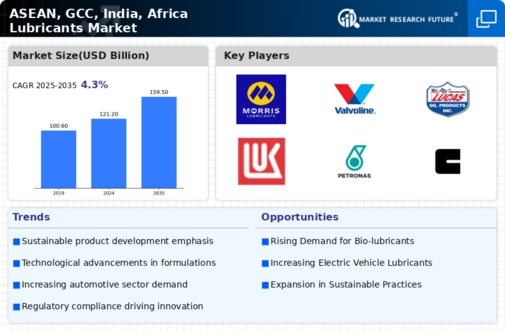
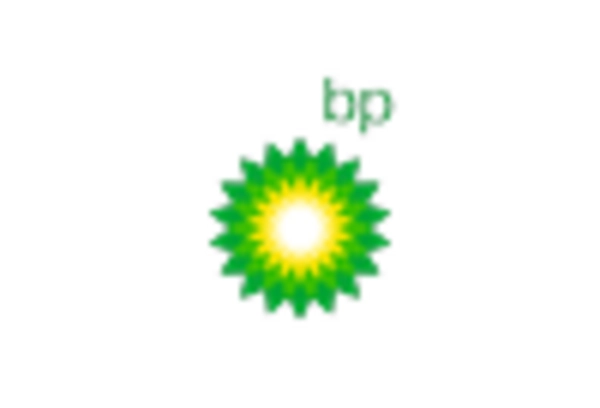
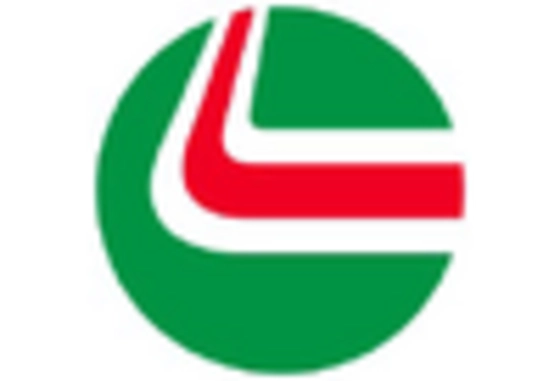

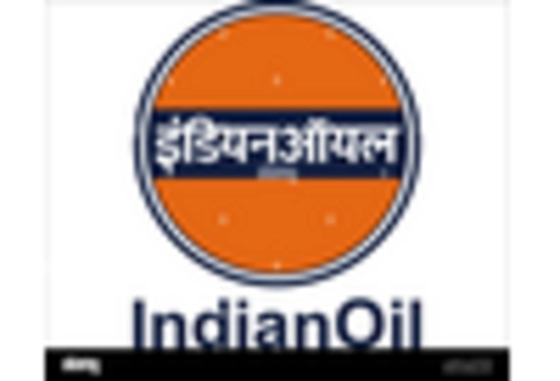
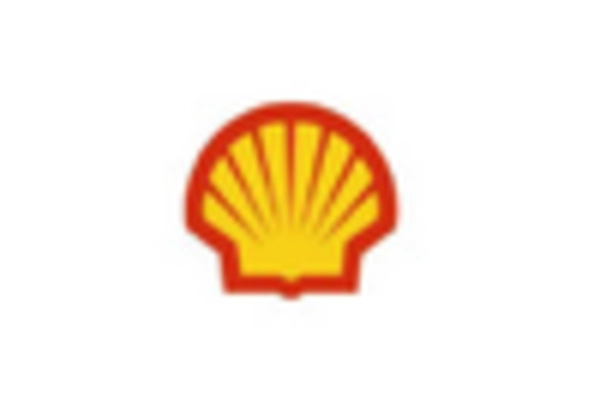










Leave a Comment